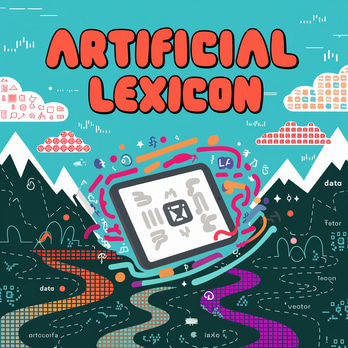How to Create Animals Using Stable Diffusion: A Beginner’s Guide
Welcome to the world of AI-powered digital art creation! In this guide, “How to Create Animals Using Stable Diffusion: A Beginner’s Guide,” you’ll learn how to use Stable Diffusion, an advanced AI tool, to transform your creative prompts into stunning animal art. Get ready to learn!
STABLE DIFFUSION
@RasputinKaiser
12/12/202315 min read
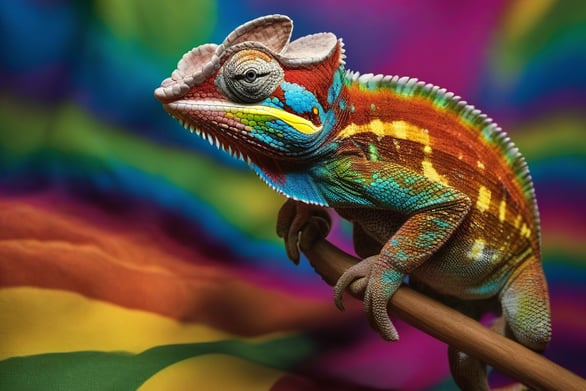

❂ GLOSSARY
Introduction
Setting Up Stable Diffusion
Mastering Prompts for Animal Imagery
List of Animals For Inspiration
Prompt Examples
Artistic Styles and Models
Generating and Refining Images
Inpainting
Conclusion
Resources
Introduction
Stable Diffusion is cutting-edge technology that allows beginners and professionals to generate lifelike animal images with ease. The key is crafting structured prompts to guide the AI accurately.
This tutorial aims to provide you with foundational knowledge to navigate Stable Diffusion. You’ll learn how to create effective prompts, and bring your animal imagery to life.
Understanding the importance of structured prompts is crucial for high-quality results. A well-structured prompt can turn a generic illustration into a masterpiece. We’ll also explore negative prompts to help the AI avoid undesired elements in your artwork.
Whether you’re new to Stable Diffusion or curious about AI-assisted image generation, this guide will help you transform words into wildlife. Let’s embark on this creative journey together!
Setting Up Stable Diffusion
Before you can start turning your prompts into lifelike animal images, you need to set up Stable Diffusion on your device. This section will very briefly guide you through the process, that way you know you have everything you need to begin generating your own AI artwork.
Prerequisites
To use Stable Diffusion, you will need:
A computer with internet access and suitable hardware.
Basic knowledge of operating systems and installing software.
Stable Diffusion can be run on various platforms including Windows, Mac, and Linux. You can also use cloud-based services like Krea.ai or ClipDrop if you prefer not to install anything on your own machine.
Local Installation:
Automatic1111 Webgui: Most feature-packed browser interface (Install Guide, Features Guide).
NMKD GUI: Clean and easy to install with added features (Requirements, Features Guide).
Invoke AI: Slick UI with many useful features (Installation, Guide).
Setting Up the Environment
Once you have the software, set up your environment:
Extract the downloaded files to a folder on your computer.
Install Python if it’s not already installed. Stable Diffusion requires Python 3.7.9 or later.
Open a command prompt or terminal window in the extracted folder.
Run the setup commands provided in the installation guide.
Troubleshooting
If you encounter issues during the installation or setup process:
Refer to the FAQs and common issues section in the documentation.
Visit community forums or the Stable Diffusion subreddit for support from other users.
Ensure that your hardware meets the requirements for running AI models, as some operations are resource-intensive.
Mastering Prompts for Animal Imagery
The power of Stable Diffusion to create vivid animal imagery lies in the art of mastering prompts. As an artist or enthusiast venturing into the realm of AI-generated art, understanding how to communicate effectively with the AI through prompts is essential.
The Role of Prompts in Stable Diffusion
Prompts are the instructions you give to the AI. They guide it to generate the specific images you want. They are crucial for interacting with Stable Diffusion and determining the artwork’s direction. A well-structured prompt produces an image that closely matches your vision. On the other hand, a vague or overly complex prompt can lead to unexpected and sometimes undesired outcomes.
Crafting Effective Prompts for Animals
When it comes to generating images of animals, the prompts should be clear, descriptive, and focused. Here are some tips for writing effective prompts for animal imagery:
Start with the Subject: Clearly state the animal you want to visualize, e.g., “photo of a majestic lion.”
Set the Scene: Add context to your subject by including the environment or background, e.g., “standing on a rocky outcrop at sunset.”
Include Descriptors: Utilize descriptive keywords to enhance the details, such as “vivid colors, high-resolution, dynamic lighting.”
Specify the Style: If you’re aiming for a particular artistic style, mention it in your prompt, like “oil painting,” “watercolor,” or “digital art.”
Weights: Use weights to prioritize certain elements within your prompt, e.g., “(lion:1.5) (savannah:1.2).”
Avoid Overcomplication: Keep your prompt straightforward and focused on the essential elements to avoid confusing the AI.
The Importance of Concise Negative Prompts
Negative prompts are just as important as the main prompts. They tell the AI what to exclude from the image. These should be kept concise and to the point. Here’s how to use them effectively:
Single words work best, such as “deformed,” “blurry,” or “cartoonish.”
Think about common mistakes the AI might make and preemptively include them in your negative prompts.
Separate negative prompts with commas and ensure they are entered in the designated negative prompt box.
Structured Prompt Formats
A structured prompt format helps maintain clarity and consistency in your requests to the AI. Here’s a structured prompt format that aligns with Stable Diffusion preferences:
Positive Prompt: “Photo of a [Animal], in [Environment], with [Specific Attributes].”
Negative Prompt: “[Undesired Element1], [Undesired Element2], [Undesired Element3].”
By adhering to this structured approach, you increase the likelihood of generating images that meet your expectations.
Practice and Experimentation
To become proficient at prompts, practice and experiment. Don’t hesitate to try various keyword combinations and structures. Each attempt will help sharpen your skills and gain insight into how Stable Diffusion interprets your instructions. Remember, the more specific and structured your prompts, the better the AI can understand your creative goals. With these tips and some practice, you’ll be on your way to creating realistic and awe-inspiring animal images using Stable Diffusion.
List of Animals For Inspiration
If you’re looking for inspiration for your AI-generated artwork, this list features a variety of animals that can be the perfect subject. Whether you want to capture them in their natural habitats, showcase specific behaviors, or unleash your creativity with surreal or fantasy settings, the possibilities are endless. To bring these animals to life with Stable Diffusion, it’s crucial to master crafting effective prompts. Embark on your creative journey and unlock the potential of your artwork!
Domestic Animals:
Cat
Dog
Horse
Cow
Sheep
Goat
Pig
Chicken
Wildlife:
Lion
Elephant
Giraffe
Zebra
Tiger
Bear
Wolf
Fox
Deer
Monkey
Kangaroo
Panda
Koala
Hippopotamus
Rhinoceros
Crocodile
Ostrich
Eagle
Owl
Penguin
Aquatic Animals:
Dolphin
Shark
Whale
Octopus
Turtle
Seahorse
Jellyfish
Starfish
Clownfish
Insects:
Butterfly
Bee
Ant
Ladybug
Dragonfly
Grasshopper
Mythical Creatures:
Dragon
Unicorn
Griffin
Phoenix
Mermaid
Pegasus
Extinct Animals:
Dinosaur
Mammoth
Saber-toothed Tiger
Dodo
You can use any animal from this list for your AI-generated artwork. Depending on your project or interest, you can show them in their natural habitats, doing specific things, or even in surreal or fantasy settings. To bring these animals to life using Stable Diffusion, you will need to learn how to create effective prompts.
Prompt Examples
To make the diverse array of animals listed earlier come to life, it’s important to create prompts that are descriptive yet concise, and specific. The following examples show how to make effective prompts for generating images of these animals using Stable Diffusion. Each example follows the preferred prompt structure, including positive and negative prompts.
Domestic Animals
Cat:
Positive Prompt: “Oil painting of a fluffy Siberian cat in the style of Vermeer, basking in warm morning sunlight with intricate fur texture and luminous eyes.”
Negative Prompt: flat, oversaturated, cartoonish.
Oil painting of a fluffy Siberian cat in the style of Vermeer, basking in warm morning sunlight with intricate fur texture and luminous eyes.
Dog:
Positive Prompt: “Watercolor illustration of a border collie mid-leap, in an impressionist-style lush green park, side-view, brimming with motion and vibrant hues.”
Negative Prompt: static, pixelated, dull.
Watercolor illustration of a border collie mid-leap, in an impressionist-style lush green park, side-view, brimming with motion and vibrant hues.
Wildlife
Elephant:
Positive Prompt: “Acrylic on canvas, full-body side-view, centered focus, depiction of an elephant with tusks, traversing the savannah, under a sunset sky, golden hour glow.”
Negative Prompt: deformed, disfigured, blown highlights, blocked shadows, fantasy.
Acrylic on canvas, full-body side-view, centered focus, depiction of an elephant with tusks, traversing the savannah, under a sunset sky, golden hour glow
Tiger:
Positive Prompt: “Digital art, Bengal tiger, wading through a shallow river, reflection on water, intense gaze, in its natural habitat”
Negative Prompt: simplified, abstract, domesticated.
Digital art, Bengal tiger, wading through a shallow river, reflection on water, intense gaze, in its natural habitat
Aquatic Animals
Dolphin:
Positive Prompt: “Graphite sketch of a playful dolphin arcing above ocean waves, clear blue sky, with meticulously rendered water droplets.”
Negative Prompt: static, pixelated, artificial elements.
Graphite sketch of a playful dolphin arcing above ocean waves, clear blue sky, with meticulously rendered water droplets
Shark:
Positive Prompt: “Linocut print of a great white shark with sharp teeth, surrounded by a school of fish, deep-sea ambiance in contrasting inky depths.”
Negative Prompt: smoothed out, caricature, tranquil.
Linocut print of a great white shark with sharp teeth, surrounded by a school of fish, deep-sea ambiance in contrasting inky depths
Exotic Animals
Parrot:
Positive Prompt: “Photo of a vibrant macaw parrot perched on a tropical branch, its vivid plumage contrasting with the lush rainforest backdrop, detailed feathers and alert eyes captured.”
Negative Prompt: “blurry, muted colors, cartoon.”
Photo of a vibrant macaw parrot perched on a tropical branch, its vivid plumage contrasting with the lush rainforest backdrop, detailed feathers and alert eyes captured
Chameleon:
Positive Prompt: “National Geographic Wildlife photo of the year, (Wide-Angle View:1.4), chameleon, mid-color change, showcasing its textured skin, against a rainbow-colored background, emphasizing the color gradient and adaptive camouflage.”
Negative Prompt: “static, oversimplified, unrealistic.”
National Geographic Wildlife photo of the year, (Wide-Angle View:1.4), chameleon, mid-color change, showcasing its textured skin, against a rainbow-colored background, emphasizing the color gradient and adaptive camouflage
Extinct Animals
Woolly Mammoth:
Positive Prompt: “Artistic rendering of a woolly mammoth in a snowy Pleistocene landscape, with detailed fur and tusks, capturing the essence of this extinct giant.”
Negative Prompt: “modern setting, cartoon, clean-shaven.”
Artistic rendering of a woolly mammoth in a snowy Pleistocene landscape, with detailed fur and tusks, capturing the essence of this extinct giant
Dodo:
Positive Prompt: “Vector Art cartoon of a dodo bird, in its Mauritian habitat, stout and hooked beak, with a hint of the island’s flora in the background, thick outlines.”
Negative Prompt: “flying, predator, vibrant colors.”
Vector Art cartoon of a dodo bird, in its Mauritian habitat, stout and hooked beak, with a hint of the island’s flora in the background, thick outlines
When creating these prompts, we used descriptive words and specific scenarios to guide the AI towards our vision. The negative prompts help filter out undesired traits and ensure the generated images match our intended style. Try different variations of these prompts to explore a wide range of artistic interpretations and find the style that best reflects your creative intent.
As you get more comfortable with the process, feel free to experiment and combine different elements to create unique scenes and subjects. Prompt crafting in Stable Diffusion is an iterative process, and each attempt enhances your understanding and skills. Enjoy creating!
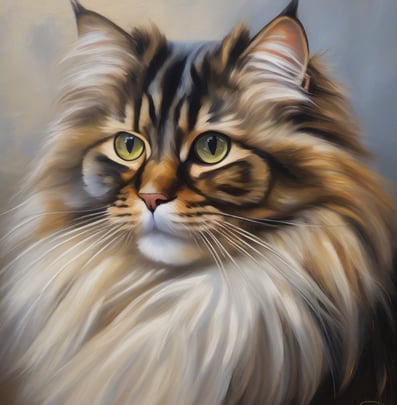



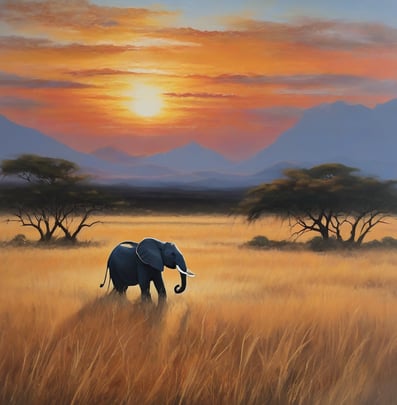

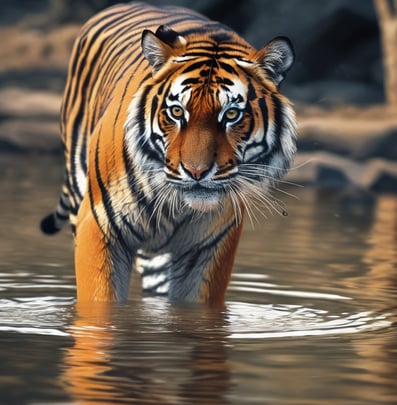

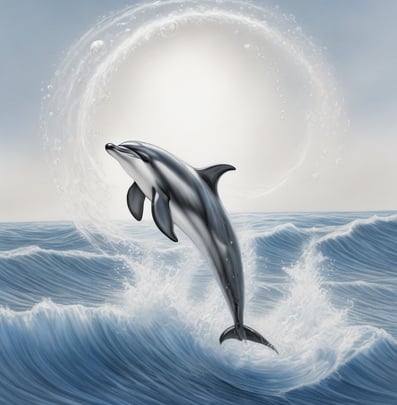

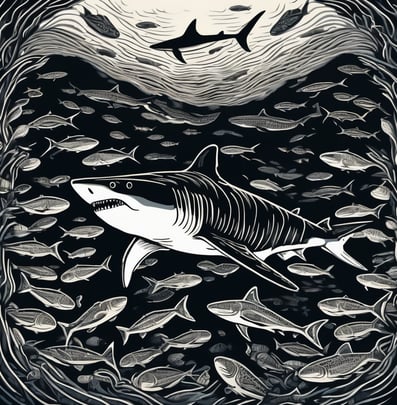

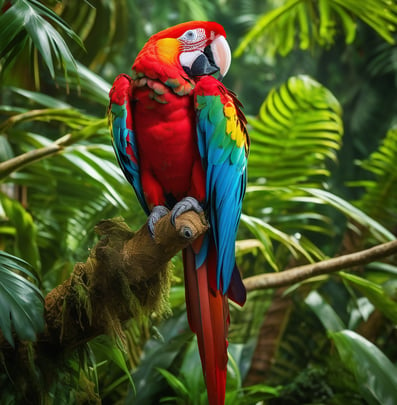

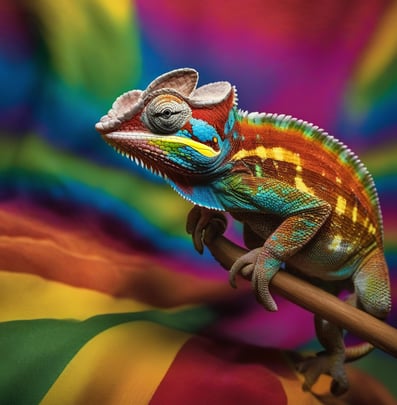


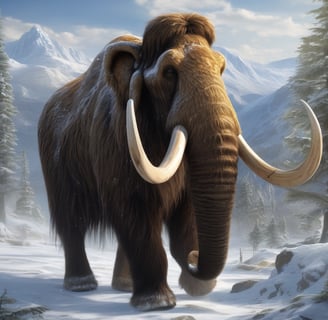
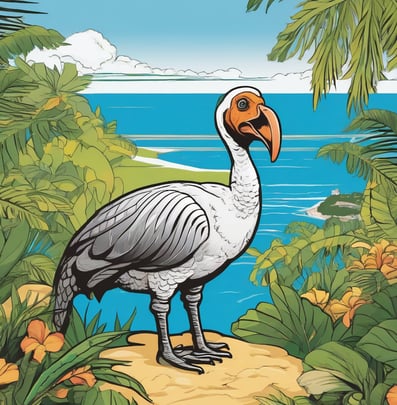

Artistic Styles and Models
When making animal images with Stable Diffusion, it’s important to choose the right artistic style and model to achieve the desired outcome. The model you pick will affect the visual language of your image, while the artistic style sets the tone and mood. Here’s how to navigate these choices to bring your vision to life.
Understanding Different Artistic Styles
Artistic style refers to the distinctive look and feel of an image that aligns with specific art genres or movements. Here are some common styles you can explore with Stable Diffusion:
Realistic: Mimics real-life photography with attention to detail and naturalism.
Cartoon: Simplified forms with bold lines and bright colors, often seen in animation.
Impressionism: Features loose brushwork and open composition, focusing on the impression of light.
Vector Art: Clean, precise lines and flat colors, characteristic of digital illustrations.
Choosing the Right Model
The model you select serves as the foundation for your artistic creation. Here are some considerations and example models when selecting a model for animal images:
Realism Models: Ideal for generating lifelike wildlife or domestic animal images. They often require prompts that include descriptive keywords like “photo,” “high resolution,” and “natural lighting.”
Realistic Vision V5.1
Stylized Models: These are tailored for specific artistic styles such as cartoons, impressionism, or vector art. Prompts for these models may include style descriptors like “anime,” “watercolor,” or “digital painting.”
Anything v3
DreamShaper
Specialized Models: Some models are fine-tuned for particular themes or subjects, such as mythical creatures or extinct animals. Using these models may require less detailed prompts, as they are already predisposed to generate images in their specialty.
Chinese Zodiac LoRA
MeinaMix
Tips for Selecting Styles and Models
Research: Familiarize yourself with the available models and their capabilities. Look at examples of images generated by each model to understand the styles they best represent.
CivitAI is the most popular repository for models
Align with Your Vision: Choose a model and style that best align with the image you envision. For example, if you want a photorealistic image of a lion, use a model designed for realism and include detailed descriptive prompts.
Experimentation: Don’t be afraid to experiment with different models and styles. Sometimes unexpected combinations can yield unique and compelling results.
Prompt Adjustments: Be prepared to tweak your prompts based on the model and style selected. Adjust the level of detail and specificity in your prompts to suit the model’s characteristics.
By carefully choosing your artistic style and model, you set the stage for the AI to create animal images that align with ideas. Every decision you make in this process adds to the uniqueness and appeal of your final artwork. With practice, you’ll develop an intuitive sense for pairing models with styles, resulting in more satisfying outcomes for your creative pursuits.
Generating and Refining Images
Now that you have your list of animals and know how to craft effective prompts, it’s time to generate and refine images to achieve your desired results. This section will walk you through the process of creating your animal images with Stable Diffusion and provide tips for refining them using various techniques.
Generating Your Animal Image
Open the Stable Diffusion Interface: Whether you’re using a local installation or a cloud-based platform like Krea.ai or ClipDrop, access the Stable Diffusion interface where you will input your prompts.
Input Your Prompt: In the text box provided, type your carefully crafted prompt. Ensure it reflects the animal, scene, and style you’re aiming for.
Include Negative Prompts: If the interface has a separate box for negative prompts, enter them there. Keep them concise to direct the AI away from undesired traits.
Adjust Settings: Before generating the image, you may have the option to adjust certain settings like the model, resolution, and number of iterations. Set these according to the needs of your project.
Generate the Image: Once everything is in place, hit the button to generate the image. The AI will process your prompts and settings to produce the artwork.
Review the Result: Examine the generated image. It may not be perfect on the first try, but it will give you a starting point for refinement.
Refining Your Creation
Even with a well-structured prompt, the first image you generate might not be exactly what you envisioned. Here’s how you can refine your creation:
Inpainting: If there are specific areas of the image that need correction (e.g., an oddly shaped limb or incorrect fur pattern), you can use inpainting techniques. This involves painting over the area you want to change with the AI then regenerating that part of the image based on your prompts.
The chameleon prompt was significantly awful to structure. The prompt went through many adjustments to minimize Inpainting necessity
Prompt Tweaking: Sometimes, a small change in the wording or the addition/removal of a keyword can significantly impact the output. Adjust your prompts and generate the image again to see the effects.
Model Fine-tuning: If the style doesn’t match your vision, consider switching to a different model that’s more aligned with the artistic style you’re targeting.
Iteration: Generating multiple versions can be beneficial. Each time you generate an image, you’ll learn more about how your prompts influence the outcome.
Post-Processing: After generating your image, you might find that applying some post-processing in an image editing program can bring out the best in your artwork. Adjusting brightness, contrast, or saturation can enhance the final image’s visual appeal.
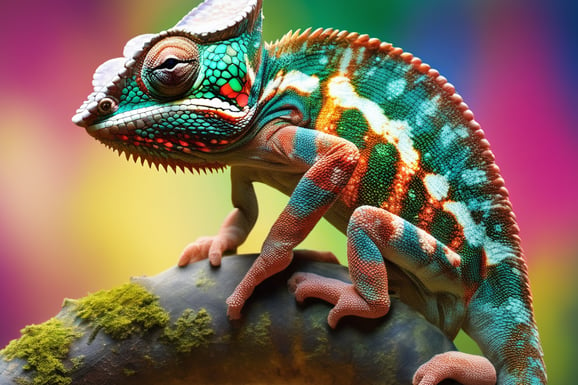

Inpainting
Inpainting is a powerful tool within Stable Diffusion that allows you to perfect your images. Here are a few steps to Inpaint effectively:
Identifying Irregularities
Before you start inpainting, take a moment to analyze your image. Look for areas that feel out of place or that detract from the overall quality of the piece. These can include:
Distorted Features: If certain elements of the animal, such as the eyes or limbs, are warped or misshapen, these are prime candidates for inpainting.
Inconsistent Textures: Often, fur, scales, or feathers might not render as expected. Look for textures that don’t match the animal’s real-life counterpart or the artistic style you’re aiming for.
Unwanted Artifacts: Sometimes, Stable Diffusion can introduce unexpected objects or patterns into the background or even the subject itself. These should be addressed during inpainting.
Selecting Areas for Inpainting
Use the Inpainting Tool: With the inpainting brush, carefully draw around the area you wish to refine. Be as precise as possible to avoid affecting surrounding details that you want to keep.
Mask with Purpose: The size and shape of your mask can greatly impact the result. Small, tight masks are great for minor blemishes, while larger masks may be needed for more significant issues.
Prioritize Changes: If there are multiple areas to address, start with the most noticeable ones. After inpainting the key areas, you can evaluate if secondary issues still require attention.
Inpainting Steps
Input a Refined Prompt: Tailor your prompt to guide the AI in fixing the specific issues. For example, if you’re correcting an animal’s eye, the prompt might be “clear, sharp eye with realistic reflection and depth.”
Generate the Correction: Initiate the inpainting process and wait for the AI to apply your changes. This may take a few moments depending on the complexity of the task.
Review and Iterate: Examine the results. If the correction isn’t perfect on the first try, you can repeat the inpainting process, potentially with an adjusted mask or prompt, until you’re satisfied.
With practice, you’ll get better at using Inpainting to make amazing, realistic animal images. Each image you create and improve will enhance your understanding of how the AI interprets your prompts and improve your skills in AI-assisted image creation.
Conclusion
Creating lifelike animal images with Stable Diffusion is a rewarding process. As you practice and refine your approach to prompt crafting and image generation, you’ll discover a world of creative potential. Keep experimenting, learning, and enjoying the creative journey that Stable Diffusion offers.
Congrats on completing this beginner’s guide on crafting lifelike animal images with Stable Diffusion! By now, you should have a solid understanding of the tools and techniques needed to turn your creative prompts into beautifully rendered animal images using the power of AI. The journey of mastering Stable Diffusion doesn’t end here. Continuous learning is key in creating digital art with AI. Each prompt and image contributes to honing your skills and refining your technique.
Watercolor illustration of a black colored Carolina Dog mid-leap catching a frisbee in an impressionist-style lush green park, brimming with motion and vibrant hues. | Stable Diffusion managed to get the exact look of my dog I can’t even find on google since it’s so rare! Wow!
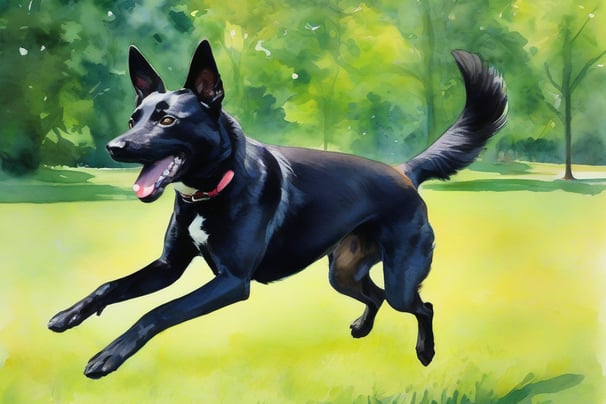

Resources
Installation and User Interfaces:
Automatic1111 Webgui: Most feature-packed browser interface (Install Guide, Features Guide).
NMKD GUI: Clean and easy to install with added features (Requirements, Features Guide).
Invoke AI: Slick UI with many useful features (Installation, Guide).
Online Platforms:
Dream Studio: Official Stability AI website for using Stable Diffusion without local installation (Guide).
Visualise Studio: User-friendly UI with unlimited image creations.
Mage.Space: Free and uncensored platform with basic options and gallery.
Playground Ai — Dezgo: Free, uncensored platform with image and text generation.
Runwayml: Real-time collaborative content creation suite.
Tutorials and Guides:
Automatic’s1111 IM2IMG Quick Tutorial: Fast-track guide for image manipulation.
In-Depth Stable Diffusion Guide for Artists and Non-Artists: Comprehensive guide on creating and refining images.
Concept Art in 5 Minutes: Quick lessons on generating concept art.
Training a Style Embedding with Textual Inversion: Guide to add a personal touch to your art using your own style or subject.
Aitrepreneur: Step-by-step videos on Dream Booth and image creation.
Nerdy Rodent: Workflow and tutorials for various aspects of Stable Diffusion.
Prompt Resources:
Public Prompts: Collection of free prompts with high generation probability.
PromptoMania: Advanced prompt builder.
Write-Ai-Art-Prompts: AI-assisted prompt builder.
Lexica Art: Gallery of images with corresponding prompts and styles.
Models and Styles:
Arcane: Styled after ‘Arcane’ from Netflix.
Disco Elysium, Elden Ring, Spiderman, and Archer: Styled after their respective games and shows.
Red Shift: For high-resolution 3D artworks.
Pixel Art V1 and Landscapes: For pixelated art and landscapes.
Robo Diffusion: For generating robot imagery.
Tools and Extensions:
Photoshop and Gimp: Post-generation image editing.
Krita for Automatic1111’s repo: Integrates with Stable Diffusion for enhanced drawing capabilities.
PictionAIry: An image guessing game where AI does the drawing.
Additional Resources:
Civitai: Website listing custom models.
A Few Cool Embeddings: For creating personalized styles.
Pixel Sprite Sheet Generator: Generates sprite sheets for animation.
